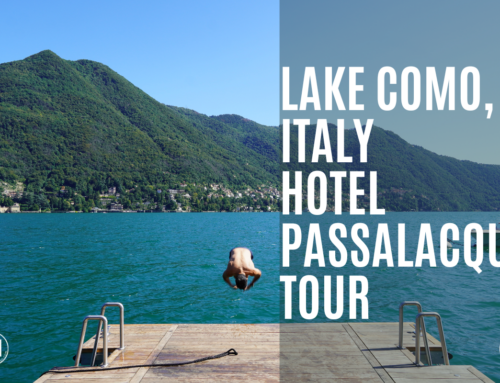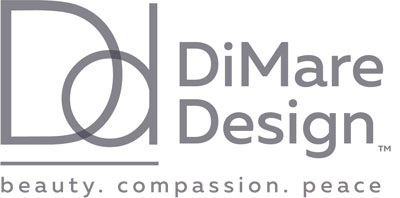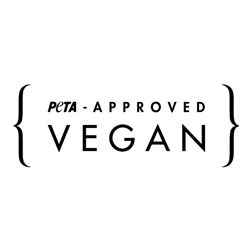Shopping for paint can be confusing and overwhelming. There are endless brands to consider. Also, it’s not only about finding the perfect color for your bedroom or baby nursery. But it’s about educating yourself about healthier & safer paint options. Many are not aware that paints can be highly dangerous and unhealthy. We all love a beautifully decorated space, but clearly not at the cost of getting sick or harming the planet, animals, and humans right? So, here’s everything you wanted to know about healthy & humane paints in “laywoman’s” terms. 🧚♀️
Pigments and Colors
Pigments give paint its color and opacity (its ability to cover the wall and hide blemishes). One pigment to watch out for is Titanium Dioxide. This chemical can be found in traditional as well as eco-friendly paints. What is it and why is it used? Titanium Dioxide is used in paint to give it a good opacity. However, the World Health Organization suggests titanium dioxide may have carcinogenic properties. Therefore, we prefer not recommending it until we know for sure.
Binders
This helps the paint adhere to a surface. There a number of different types of binders. The most common binders are latex (not used in the UK or EU) and beech cellulose (100% plant based).
Solvents
Solvents help with the dispersion of the above two ingredients within the paint.
Conventional Paints
Traditional paints (polyacrylic paint) may include substances such as formaldehyde, heavy metals and plastics. What are these? Simply put, these substances are chemicals known as volatile organic compounds (VOC’s). Producing 1 liter of paint can result in up to 30 liters of toxic waste”.
Each layer of polyacrylic paint applied to a surface creates a thin plastic membrane. This membrane has an effect on your home. Considering a room may require 2-3 layers of paint, this will not enable the walls to breath. Over time, this type of paint will trap moisture behind it. Ultimately, dampness and mold could appear on your walls.

Indoor Air Quality
What effect can traditional paints have on the internal air quality of your home? Air pollution! We all know that polluted air is not good for us. Traditional paints can decrease the air quality within our homes and workspaces. The British Lung Foundation writes, “the internal air quality of a building has been associated with health issues ranging from asthma, COPD to lung cancer.”
The Environmental Protection Agency (EPA) notes the effects of VOCs are about 2-5 times higher indoors than outdoors. VOC gases released by traditional paints can be higher than that of eco-friendly paints. It is suggested that certain VOCs emitted into the air of children’s bedrooms can increase the likelihood of illnesses such as asthma, eczema, and rhinitis. It is not just the toxic gases emitted from the paint after it has been applied to the walls, but the fumes it releases during and after your painting. These fumes can cause headaches, irritation of the eyes, nausea, and severe respiratory illnesses.
So why is this paint used if it is associated with these kinds of health risks? Traditional paints are cheaper, considered by some to be more cost-effective and time-saving to apply.
Eco-Friendly & Humane Paints
Consumers thankfully, want to protect the environment and use products that are healthy and animal friendly. So, what makes paint eco-friendly and humane? It is defined as a product that has no detrimental effect on the environment or society.
Plant-based paints have a lower concentration of VOCs, which break down quicker compared to traditional paints. While a paint may be sustainable it may not be suitable for vegans. Some paint manufacturers include animal products in eco-friendly paints. Ingredients can include casein which is a milk product and shellac, a resin from the female Lac bug or Beeswax.
Let’s design your dream home with safe & ethical paint, furniture and decor! Sign up for a Virtual Design consult or 20 minute phone call HERE or by clicking the image above!
Natural & Mineral Paints
Natural and mineral paints are microporous, allowing breathable surfaces. The paints are made from either plant-based products (linseed oil) or minerals (chalk). These paints can be wiped. Application of the paint is easy and a surface should only need 2 coats.
Lime Paints
Pure and Originals lime paint is a 100% mineral paint, which allows your walls to breathe. Lime-painted walls have a rather unique aged appearance. Application of the paint should comprise using a lime paint brush (a paintbrush, which consists of extra-long fibers). A primer should be applied to your walls prior to the paint being applied. This will help with its adhesion.
Check List
Then what kind of things do we need to be looking at when selecting an eco-friendly and humane Paint?
- The carbon footprint of the paint, is also referred to as cradle-to-grave impact. What does that mean? How the item is made, transported from raw material to finished product, and how the product is disposed of.
- The ingredients of the paint. This should be displayed on the tin. By law, paint manufacturers only have to disclose substances over a certain quantity on the tin. So, you can contact the supplier directly, requesting a complete breakdown of the paint’s ingredients.
- Whether it has been tested on animals. This information may take some digging. But it can either be found on the supplier’s website or by contacting them directly.
Be Cautious
Be aware of any paint supplier advertising its product as VOC-free. No paint is completely VOC-free. But a paint can be a low VOC. Eco-friendly paints in the past didn’t provide an array of colors similar to traditional paints in the past. However, there is an increasing number of companies now providing eco-friendly and humane paints. They can be a bit more expensive. But the health and environmental benefits far out-way the costs.
In Conclusion
Choosing the right paint, its color, environmental impact, and influence on health, may feel like a research project you participated in at college or university. What can sometimes feel unnecessarily complicated, can be made simpler by considering the above points or contacting Airbnb cleaning. Promote a healthy and happy home for you and your family by choosing the right paint.& listen to Deborah’s interview with Tomas about safe & healthy paints.
Thanks for writing this fabulous article, Rachel! Rachel Fowlers is a self-driven, passionate creator of sustainable and vegan design, RachelFowlerInteriors.com
People want to come home to healthier, happier environments. Zero toxin, vegan and wellness design is becoming the “new normal.”

– Deborah DiMare –
Join my Facebook Community “Design for a Non Toxic & Cruelty Free Home.
Wish to receive more articles like this? Subscribe to my newsletter.
Check out our non-toxic and cruelty-free Amazon shop.
Learn how to design spaces that are non toxic, non animal based (vegan) and promote wellbeing,
by subscribing to our Youtube Channel.
In case you missed it 🌸
Have you taken our newest beginner course?!
Learn more about the Online Nursery & Kids Room Design Course.
Need help finding non-toxic and cruelty-free furniture & decor?
Check our Resource Guide (150+ brands!)
Need help creating a safe & healthy home for you & your family?
BOOK US for a 20-minute call!
Need even more family-friendly home design tips?
Check out our FREE 23 Chemical and Cruelty Free Design Tips Sheet
Here’s a link to a financial guide for parents of children with disabilities
Why go vegan on your mattress
Meghan Markle and her choice of nursery paint
Apps for kids with Autism
Check out a complete guide to renovating your kitchen
Creating a Chemical Stress-Free Home
The 8 Best Zero-VOC Paints of 2023
What Are Zero-VOC Paints, and Which Paint Brands Sell Them?
2023 Paint Color Trends
Just a heads up, this article may contain links to affiliate sites, products or services. If you purchase something through one of those links, you won’t pay a penny more! The affiliate simply provides us with a small commission which helps us fund our operations, promoting healthy & compassionate interior decorating.
Share this with friends!
I’m Deborah! My mission is to show others by demonstration, that no living being, human & non, be sacrificed for beautiful, non toxic, healthy & durable furniture & decor. More about me.

Light up Your Inbox
Sign up today for my newsletter to stay up to date with the latest & greatest from DiMare Design.

